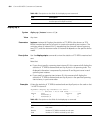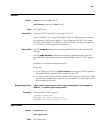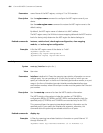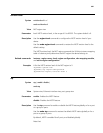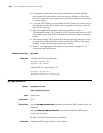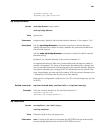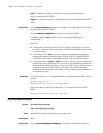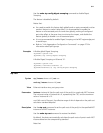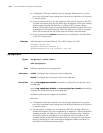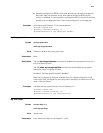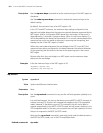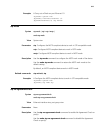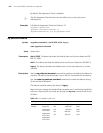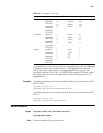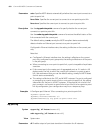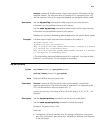
612 CHAPTER 38: MSTP CONFIGURATION COMMANDS
■ Configured in Ethernet interface view, the setting is effective on the current
port only; configured in port group view, the setting is effective on all the ports
in the port group.
■ If you set instance-id to 0, you are setting the path cost of the port in the CIST.
The path cost setting of a port can affect the role selection of the port. Setting
different path costs for the same port in different MST instances allows
different VLAN traffic flows to be forwarded along different physical links, thus
to enable per-VLAN load balancing. When the path cost of a port is changed,
MSTP will re-compute the role of the port and initiate a state transition.
■ If you do not provide instance instance-id, your configuration will take effect
in the CIST instance only.
Examples # Set the path cost of port Ethernet 1/3 in MST instance 2 to 200.
<Sysname> system-view
[Sysname] interface ethernet 1/3
[Sysname-Ethernet1/3] stp instance 2 cost 200
stp edged-port
Syntax stp edged-port { enable | disable }
undo stp edged-port
View Ethernet interface view, port group view
Parameters enable: Configures the current port to be an edge port.
disable: Configures the current port to be a non-edge port.
Description Use the
stp edged-port enable command to configure the current port to be
an edge port.
Use the
stp edged-port disable or undo stp edged-port enable command to
configure the current port to be a non-edge port.
All Ethernet ports are non-edge ports by default.
Note that:
■ Configured in Ethernet interface view, the setting is effective on the current
port only; configured in port group view, the setting is effective on all the ports
in the port group.
■ If a port directly connects to a user terminal rather than another device or a
shared LAN segment, this port is regarded as an edge port. When the network
topology changes, an edge port will not cause a temporary loop. Therefore,
configuring a port as an edge port can enable the port to transition to the
forwarding state rapidly. We recommend that you configure an Ethernet port
directly connecting to a user terminal as an edge port before to enable it to
transition to the forwarding state rapidly.



